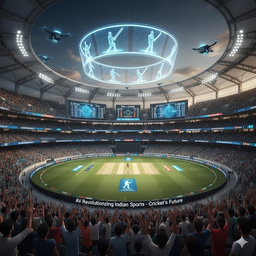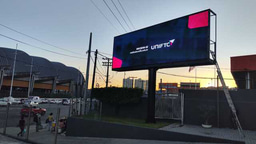SOC vs. Media Players: Which is Right for You?

What is a System-on-Chip (SoC) Display?
First things first, what exactly is a System-on-Chip display? Think of it as the Swiss Army knife of digital signage. It’s a screen with all the brains built right in: processor, memory, storage, and even software. No extra gadgets or wires hanging off the back. It’s all there, ready to go.
Compare that to the traditional setup—a separate media player that connects to your display. It’s kind of like carrying around a desktop computer just to check your email. Sure, it works, but is it really the most efficient way to do things?
Why SoC Displays are the Cool Kids on the Block
- Cost Efficiency
Let’s talk money. SoC displays save you cash because you’re not buying an extra media player. Plus, there are fewer things to install, maintain, or replace. Fewer cables, fewer headaches.
And let’s not forget the electric bill. SoC displays use less power since you’re not running two devices. It’s like swapping out an ancient energy-hogging fridge for one of those shiny, energy-efficient models. The savings add up over time, especially if you’ve got a whole fleet of screens.
- Simplified Setup and Deployment
Setting up an SoC display is a breeze. No extra boxes, no spaghetti mess of cables, no trying to figure out which plug goes where. Just mount the screen, power it up, and you’re good to go. It’s so simple that even your tech-averse coworker who still prints emails can handle it.
For businesses rolling out a bunch of screens across locations, this simplicity is a game-changer. IT teams can remotely configure and manage everything. No need to send a tech wizard to every store just to plug in some wires.
- Energy Efficiency
Running digital signage 24/7 can rack up quite the electric bill. SoC displays are like the hybrid cars of the signage world—lean, green, and efficient. They’re great for businesses that want to cut costs and save the planet at the same time. Bonus: your eco-conscious customers will love you for it.
- Less Maintenance, More Chill
Fewer devices mean fewer things that can break. And when you do need to update software or content, you can usually do it remotely—from your office, your couch, or even the beach if you’re feeling fancy. It’s like having a Roomba for your digital signage—set it and forget it.
- Built-In Software: No Drama, Just Harmony
Many SoC displays come with built-in content management systems (CMS). It’s like having Netflix preloaded on your TV. You can upload, schedule, and manage content without needing third-party tools. Everything works together smoothly, which means fewer compatibility issues. It’s all harmony, no drama.
- Sleek and Space-Saving
With SoC displays, there’s no need for extra boxes or clutter. It’s all about that sleek, minimalist look. Perfect for places where aesthetics matter—think high-end boutiques or modern offices. It’s like upgrading from a bulky desktop to a slim laptop. Who doesn’t love more space?
But Wait, What’s the Catch?
Okay, SoC displays aren’t perfect. There are a few things to keep in mind.
Limited Power for Fancy Stuff
If you’re running super fancy content—like 4K videos with all the bells and whistles or interactive touchscreens—SoC displays might struggle. They’re built for efficiency, not extreme performance. It’s like trying to play the latest video game on a budget laptop. It’ll work, but it’s not going to blow your mind.
Proprietary Ecosystems: The Walled Garden
Some SoC displays operate in proprietary ecosystems. That’s tech-speak for “you’re kind of locked in.” Switching to a different content management system or software might be tricky. If you’re a fan of flexibility, this could be a dealbreaker.
Higher Upfront Costs
While SoC displays save money in the long run, they do come with higher upfront costs. It’s like buying a Tesla—the initial price tag stings, but the savings over time make it worth it. Still, for small businesses on tight budgets, that upfront investment might be a hurdle.
When a Separate Media Player Still Makes Sense
Sometimes, the old-school method still has its place. Here’s when you might want to stick with a separate media player:
- You Need More Horsepower: If you’re running super-intensive applications (think AI, live data, or complex animations), a media player might give you the extra oomph you need.
- You’re Plugging in Extra Gadgets: Cameras, sensors, or other peripherals might require the extra ports and compatibility a media player provides.
- You Like Swapping Things Out: If you’re someone who loves upgrading hardware every year, a separate media player offers more modularity.
Real-World Examples: SoC Displays in Action
- Retail: A clothing store uses SoC displays to show off the latest collections and flash sales. With no cables cluttering up the place, the screens blend seamlessly into the modern store design.
- Restaurants: Your favorite burger joint uses SoC displays for dynamic menu boards. The manager can update prices or add new items in real-time without stepping away from the grill.
- Corporate Offices: In the lobby, an SoC display shows the meeting schedule and welcome messages for visitors. It’s sleek, professional, and totally hassle-free.
- Airports: SoC displays handle flight schedules and advertisements, running smoothly 24/7 despite the chaos of delayed flights and lost luggage.
The Future of Digital Signage
SoC displays are just getting started. Here’s what the future might look like:
- AI-Powered Content: Imagine screens that adjust content based on who’s looking at them. Creepy or cool? You decide.
- Edge Computing: Faster, smarter displays that can handle more data without needing a beefy central server.
- 5G Connectivity: Real-time updates and seamless cloud integration without any lag. It’ll be like upgrading from dial-up to fiber internet.
The Bottom Line
System-on-Chip displays are the future of digital signage. They’re sleek, efficient, and easy to use. Sure, they’re not perfect for every situation, but for most businesses, they’re a no-brainer. Standard media players will always be needed in some compacity, and until the same processing power can be added to a SOC display, there will be demand.
At this time it's up to you as to what the best option for your customer experience. Both options have their pros and cons, and you should always gather as much requirements for your project that will help you make the best choice.
Recommended Content
AV for Sports Industry in India with Cricket Prospective






Please sign in or register for FREE
If you are a registered user on AVIXA Xchange, please sign in